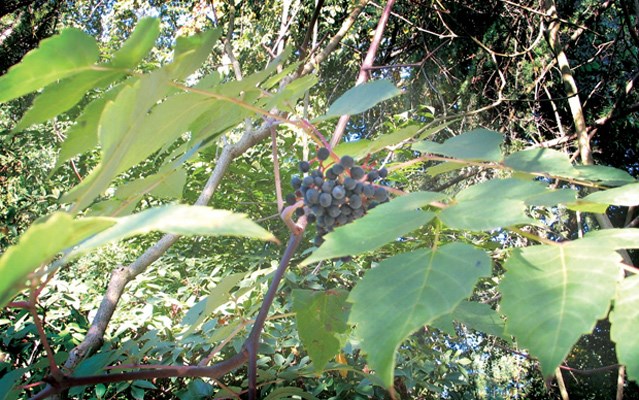RECENTLY I went on a journey into a world of exotic Asian plants growing right here in Vancouver.
Taking me on this journey was Gerry Gibbens, the senior horticulturist at VanDusen Botanical Gardens and the defacto-curator of collections for the Sino-Himalayan garden. He is a journeyman with the notable distinction of having spent two years studying and working with plants in the National Rhododendron Collection at Windsor Great Park, England.
The Sino-Himalayan garden is one of the largest theme areas in VanDusen, occupying three hectares of the 22-hectare VanDusen garden. Gibbens is responsible for the care and development of 30 Asian-origin plant families containing 800 species encompassing several thousand individual plants. Plants for the garden are sourced from specialty nurseries, collaborating botanical gardens and plant collectors. Gibbens was previously able to obtain plants from shares paid into funding plant expeditions until former director Jill Cherry arrived at VanDusen in the early 2000s. Cherry stopped funding plant shares in expeditions; a short-sighted management decision that has borne no fruit for VanDusen today.
Gibbens started working in the Sino-Himalayan when the garden first opened and was just bare contoured hills, a few second-growth conifers and nothing else. Under the guidance of then director Roy Forster, Gibbens has seen much change in his area, from bare earth to thriving forest filled with exotic beauty and biodiversity. The garden now stands as a testament to Gibbens' dedication, hard work and vision for the garden. The Sino-Himalayan garden now represents one of the best collections of Asian plants on the west coast of North America, containing many significant and mature rhododendron specimens, exotic trees, vines and shrubs from Asia. Gibbens told me, "I have planted every single plant in this garden and I work with them every day, observing how they adapt to our climate and soil and adjusting them as needed." Gibbens definitely loves his work and his passion shows when you walk through his garden and realize that he has almost single-handedly built the garden into the worldclass collection that it is today.
As we walked through the garden, Gibbens is at ease, passionate and highly informative and he talks more like a preacher than a horticulturist. His knowledge highlights many exotic fruits, flowers, bark and interesting leaves with such detail and passion that I am enthralled by his horticultural sermon. I ask how he decides where to plant new additions to the collection? He says, "I look at the plant's native environment and then I seek a suitable location that recreates that plant's habitat in the garden. But I plant three plants of each new species, each separately placed in different locations to evaluate over the long-term the best soil and light in our climate." He says he is happy with 90 per cent of his planting decisions and says, "Progress, not perfection, is the goal."
We round the bend on one of the many pathways and Gibbens points out a large tree with a vine growing upward in the tree's canopy. Gibbens tells me the vine is called the pepper vine (Ampelopsis megalophylla) and encourages me to look closely at the large clusters of black-purple berries hanging likes grapes all through the tree's branches. It's a truly fantastic and exotic sight.
We progress into an area that feels primeval, filled with indumented rhododendron, tree-ferns and other unusual plants tucked under towering Douglas firs. High up in the tree canopy is Magnolia campbelli subspecies mollicomata adorned with a few scarlet-orange fruits that shine brilliantly in the late day sun. I ask him: Will the squirrels get those fruits? Gibbens says "Most likely." How do you deal with squirrel damage? "That's what coyotes are for," he says. There are a couple of coyotes that visit the garden regularly and Gibbens says "They all know me."
As we progress into the Dawn Redwood (Metasequoia glyptostroboides) grove I stand in awe of the size of the trees and the large and majestic Rhododendron calophytum under-planting the redwoods. This area is arguably one of the best botanical garden design compositions in our region, it is truly stunning.
We then move to a newly renovated area called the "Mecanopsis Dell" filled with several Mecanopsis species including napaulensis, horridulus, villosa and betonicifolia. Gibbens says, "This area will be filled with colourful poppy-like blooms next spring and early summer. And these plants should naturalize and flower for years to come."
Gibbens has made a lifetime's work of cultivating beauty and growing plants with the goal of teaching the public about the value and beauty of plants and interconnectedness of plants and people. With his looming retirement, many of us in the horticultural world are wondering if his work will be cared for properly and live on as the legacy that Gibbens intended it to be.
Todd Major is a journeyman horticulturist, garden designer, writer, consultant and organic advocate. For advice contact him at [email protected].



